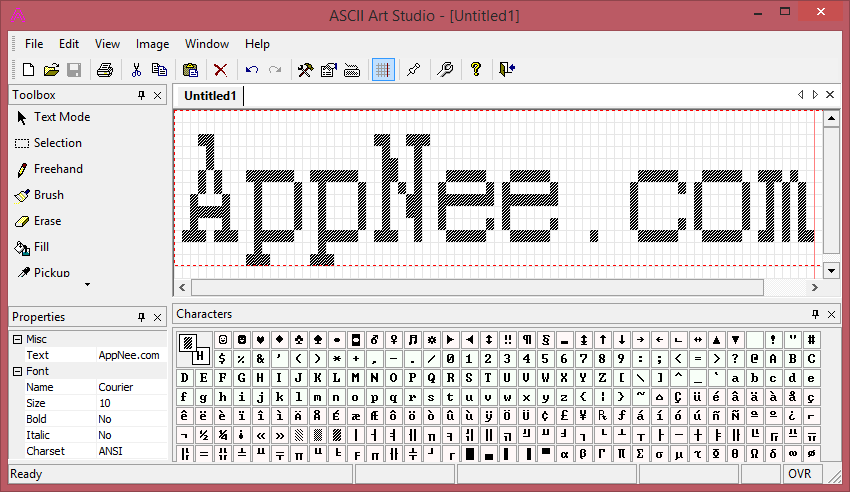

The nostalgic feeling and excitement you get when you see ASCII art is pretty awesome – it definitely brings back some good memories.
#Best ascii art how to
He's also (one of?) the creator (s?) of 05AB1E.Īlso, maybe try Dennis' kolmogorov-complexity language: Bubblegum no idea how to use this.LOVE ASCII ART from old school computing days, ASCII has been around for quite some time! I remember first seeing it way back in ancient times (also known as my high school computer class – I was a total geek then too lol). I'd probably just push half the string and Palindromize for 10 bytes "-=_"û or golf it like Adnan did in the comments using factorial, smart man Now, with this specific challenge the string is so short it doesn't make sense to do. ‡ # Transliterate, replace 0, 1 and 2 with the symbols. …-_= # Push the values to the conversion. Or try it with intermediate steps displayed. I then wrap it in the following code: 05AB1E, 16 bytes I convert to decimal using the lowest possible base (3): 879412 I replace the characters in the original string with the numbers: 1122200022211

I then assign them numbers starting with 1 then 0 then 2: - is 1. In 05AB1E I enumerate all of the characters used in the ASCII-art, for instance: Here's a quick crash-course on a base conversion tactic: There's plenty of data-structure manipulation techniques to use in conjunction with this simple base compression idea.
#Best ascii art zip
If it's a four way pattern you can do things like zip and bifurcate to only draw a corner of the pattern. Often in ASCII challenges there are repitition tricks you can utilize to only draw half the pattern then flip and concatenate. The best thing about 05AB1E is that, even with the simple base conversion there's often tricks you can use to extend and even halve your byte-count. While 05AB1E isn't intended for ASCII-Art directly, I've won 2 challenges with it. Intro to ASCII-Golfing for 05AB1E (Base Conversion ) If you are interested in learning more, here are some good resources:Ī chat room where I would be happy to answer any questions you have, and help explain how it works to you.Ī tips thread for golfing in vim, but most of the tips carry over.Ī meta post describing V in some more detail. There are some bugs, and some things I haven't gotten around to adding yet. Personally, I think this makes it more fun to work in (kind of like using retina for tasks regex was never intended for). It's also very powerful, but because it's based on a very popular text editor that is 30 years old, there are lot's of obscure features that could very easily confuse new users.Įven though it is better at handling numbers than vim, it's number support is still not great. However, I would also give a few disclaimers. So I really enjoy using this language, and if you are looking for a specifically ascii-art language, I highly recommend it. Additionally, all inputs is implicitly added into it's internal memory, which is nice when most of the challenge is about changing the input in a certain way.


It uses regex compression to quickly change text.Īll of it's internal memory, which is just a 2d array of characters, is implicitly printed when the program ends. You can use some mathy operations, but these are usually the longer way to achieve things. Since most other languages are not intentionally 2 dimensional, this offers a nice edge when the challenge is about positioning text in 2D space For example, x deletes a single character, but Wx moves forward a word and then deletes a character. The other commands move the location of the cursor. One feature is that is has a "cursor" position, where most of the commands do something based on where the cursor is in the text. Some of the things that make V great for ASCII-art: For example, you can set up a "while loop" of sorts by doing will repeat until an error happens. When I started using the vim text editor for code-golf, I discovered that it's actually pretty good at it, but has some annoying features that make it more difficult to compete it. This just makes running it more convenient. Under the hood, V is just vim, but all of the keystrokes are run automatically, and the contents of the vim buffer are printed to STDOUT when the program is over. Well, as a matter of fact, there is! One such language is one I have been working on for a while called V.


 0 kommentar(er)
0 kommentar(er)
